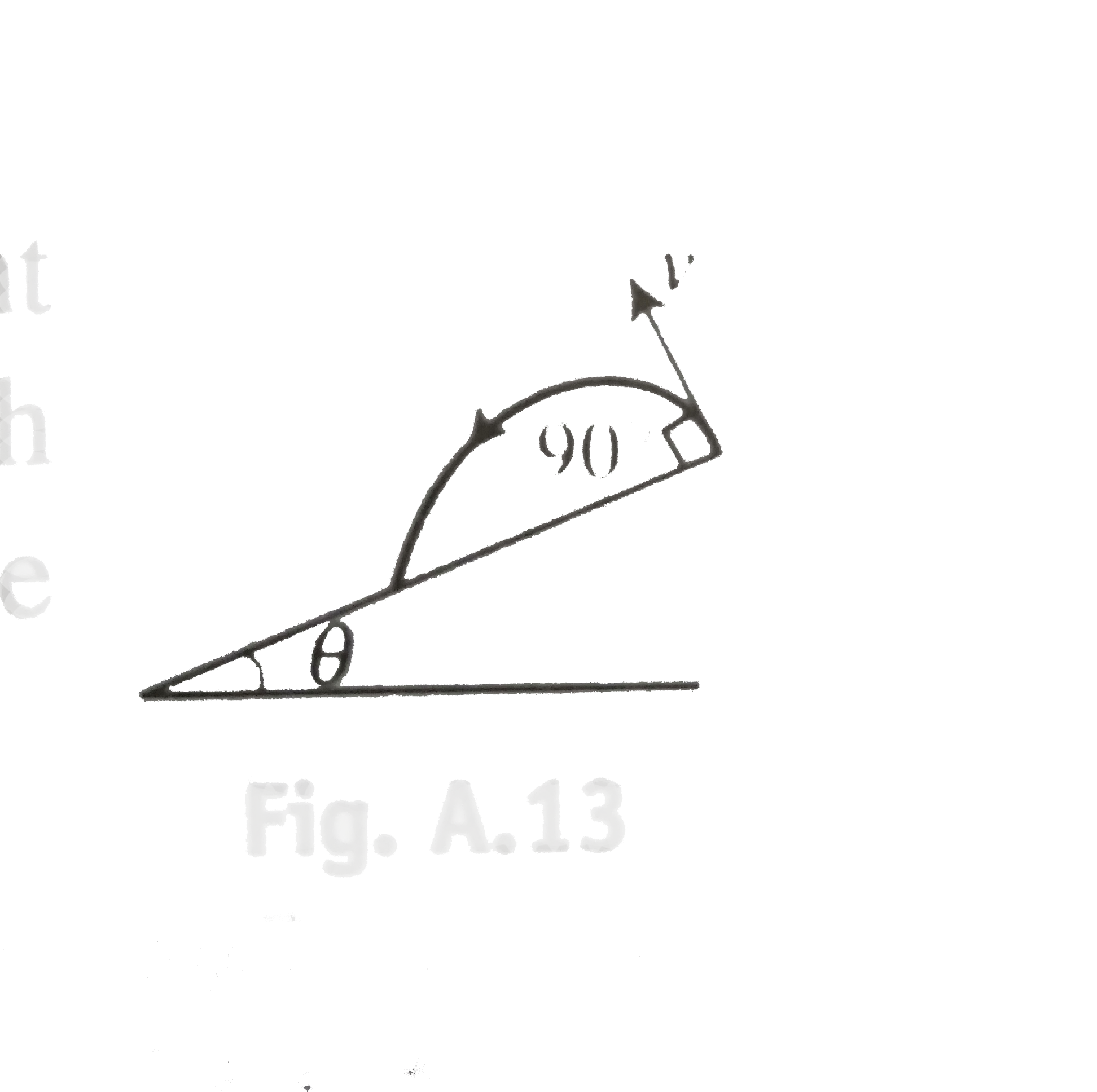Two projectiles are fired at different angles with the same magnitude of velocity such that they have the same range. At what angles they might have been projected ?
35∘and75∘
25∘and65∘
10∘and59∘
None of these
The correct Answer is:B
To solve the problem of determining the angles at which two projectiles can be fired with the same initial velocity to achieve the same range, we can follow these steps:
1. Understanding the Range Formula:
The range R of a projectile is given by the formula:
R=u2sin(2θ)g
where u is the initial velocity, g is the acceleration due to gravity, and θ is the angle of projection.
2. Setting Up the Problem:
Let the angles of projection for the two projectiles be θ1 and θ2. Since both projectiles have the same initial velocity and range, we can equate their range formulas:
u2sin(2θ1)g=u2sin(2θ2)g
This simplifies to:
sin(2θ1)=sin(2θ2)
3. Using the Sine Function Properties:
The sine function has the property that:
sin(x)=sin(180∘−x)
Therefore, we can write:
2θ1=2θ2or2θ1=180∘−2θ2
From the first equation, we get:
θ1=θ2
This is not useful since we need different angles.
4. Finding the Relationship Between Angles:
From the second equation, we can derive:
2θ1+2θ2=180∘
Dividing by 2 gives:
θ1+θ2=90∘
This means that the two angles of projection are complementary.
5. Conclusion:
Therefore, if two projectiles are fired at different angles with the same initial velocity and achieve the same range, the angles must satisfy:
θ1+θ2=90∘
The range R of a projectile is given by the formula:
R=u2sin(2θ)g
where u is the initial velocity, g is the acceleration due to gravity, and θ is the angle of projection.
Let the angles of projection for the two projectiles be θ1 and θ2. Since both projectiles have the same initial velocity and range, we can equate their range formulas:
u2sin(2θ1)g=u2sin(2θ2)g
This simplifies to:
sin(2θ1)=sin(2θ2)
The sine function has the property that:
sin(x)=sin(180∘−x)
Therefore, we can write:
2θ1=2θ2or2θ1=180∘−2θ2
From the first equation, we get:
θ1=θ2
This is not useful since we need different angles.
From the second equation, we can derive:
2θ1+2θ2=180∘
Dividing by 2 gives:
θ1+θ2=90∘
This means that the two angles of projection are complementary.
Therefore, if two projectiles are fired at different angles with the same initial velocity and achieve the same range, the angles must satisfy:
θ1+θ2=90∘
Similar Questions
Knowledge Check
Two particles are projected from the same point with the same speed at different angles θ1 & θ2 to the horizontal. They have the same range. Their times of flight are t1 & t2 respectily
At1t2=tan2θ1Bt1sinθ1=t2cosθ2Ct1t2=tanθ1Dt1t2=tan2θ2Two projectiles A and B are thrown with velocities v and v2 respectively. They have the same range. If B is thrown at an angle of 15∘ to the horizontal, A must have been thrown at an angle
Asin−1(116)Bsin−1(14)C2sin−1(14)D12sin−1(18)Two particles A and B are projected from the same point with the same velocity of projection but at different angles αand β of projection, such that the maximum height of A is two-third of the horizontal range of B. then which of the following relations are true?
A3(1−cos2α)=8sin2βBRange of A=maximum height of BCMaximum vlaue of β is 12sin−1(3)4DMaximum horizontal range of A =u2g and this occurs when β=12sin−1(3)8
Write two different vectors having same magnitude.
View SolutionA projectile is fired at an angle of 30° to the horizontal with the speed v. If another projectile is projected with the same speed, then at what angle with the horizontal it must be projected so as to have the same range ?
View SolutionTwo projectiles are projected from the same point different velocities and different angles of projection .If the maximum height attained by both the projectiles is same, show that sum of the times taken by each to reach the highest point is equal to the total time of flight of either of the projectiles .
View SolutionA particle is fired with velocity u making angle θ with the horizontal.What is the change in velocity when it is at the highest point?
View SolutionA projectile is fired with a velocity v at right angle to the slope inclined at an angle θ with the horizontal. The range of the projectile along the inclined plane is

View Solution
